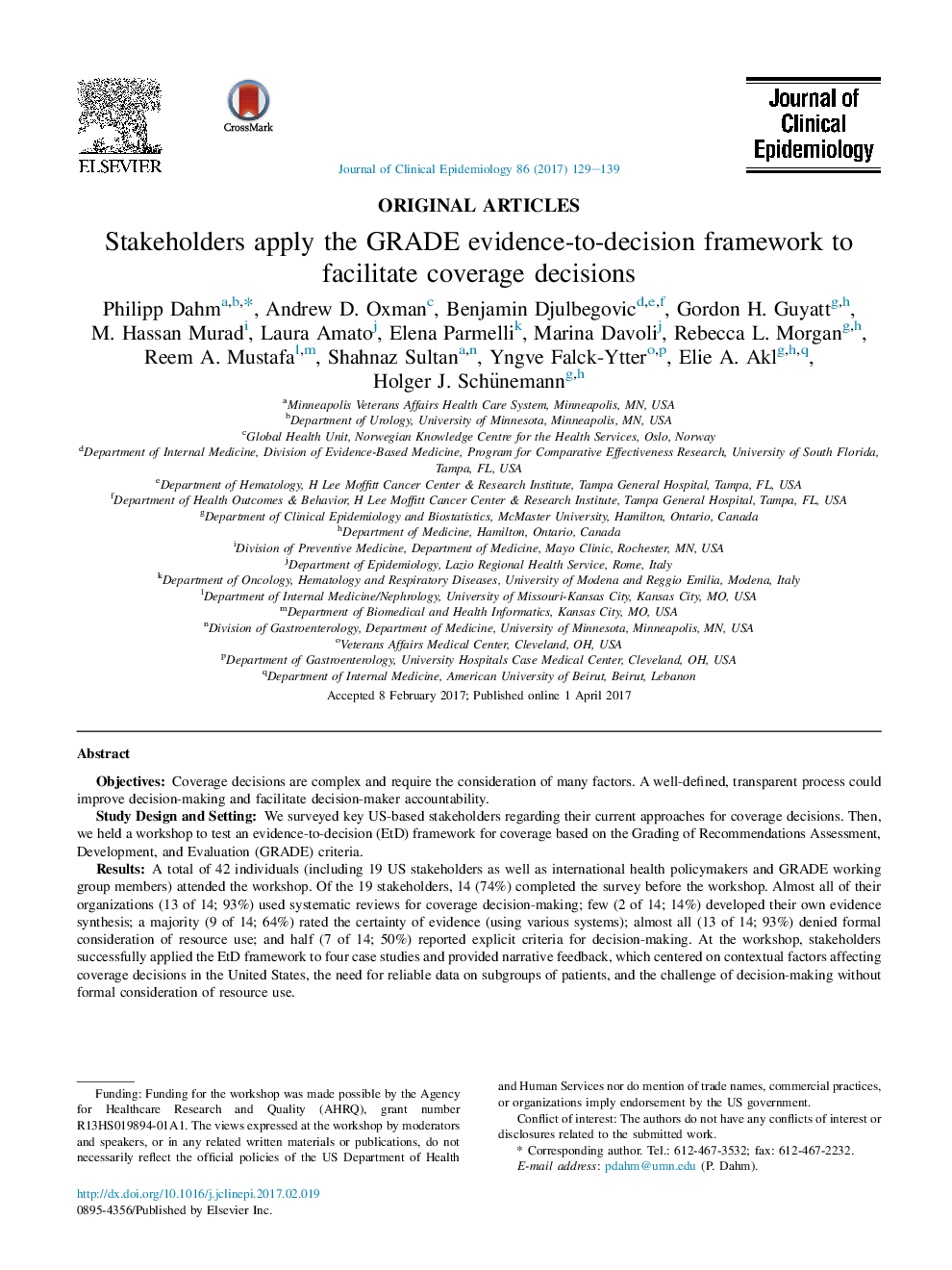| Article ID | Journal | Published Year | Pages | File Type |
|---|---|---|---|---|
| 5121766 | Journal of Clinical Epidemiology | 2017 | 11 Pages |
ObjectivesCoverage decisions are complex and require the consideration of many factors. A well-defined, transparent process could improve decision-making and facilitate decision-maker accountability.Study Design and SettingWe surveyed key US-based stakeholders regarding their current approaches for coverage decisions. Then, we held a workshop to test an evidence-to-decision (EtD) framework for coverage based on the Grading of Recommendations Assessment, Development, and Evaluation (GRADE) criteria.ResultsA total of 42 individuals (including 19 US stakeholders as well as international health policymakers and GRADE working group members) attended the workshop. Of the 19 stakeholders, 14 (74%) completed the survey before the workshop. Almost all of their organizations (13 of 14; 93%) used systematic reviews for coverage decision-making; few (2 of 14; 14%) developed their own evidence synthesis; a majority (9 of 14; 64%) rated the certainty of evidence (using various systems); almost all (13 of 14; 93%) denied formal consideration of resource use; and half (7 of 14; 50%) reported explicit criteria for decision-making. At the workshop, stakeholders successfully applied the EtD framework to four case studies and provided narrative feedback, which centered on contextual factors affecting coverage decisions in the United States, the need for reliable data on subgroups of patients, and the challenge of decision-making without formal consideration of resource use.ConclusionStakeholders successfully applied the EtD framework to four case studies and highlighted contextual factors affecting coverage decisions and affirmed its value. Their input informed the further development of a revised EtD framework, now publicly available (http://gradepro.org/).
